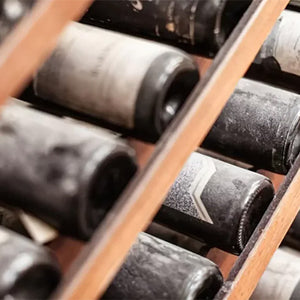
What Are Tannins In Wine?
While best known as the compounds in wine that make your mouth feel dry, there’s actually a whole lot more to learn about these microscopic components. Curious? Get to know everything you need to know about tannins via our explainer here.
What Are Tannins?
Tannins are bitter components found in a variety of plants, wood, and fruits. Their main purpose in the wild is to keep animals (and humans) at bay, for the sake of allowing the plant / fruit to reach optimal ripeness. Think of the feeling of
What Do Tannins Taste / Feel Like?
While tannins themselves don’t necessarily have a taste, the feeling that they leave on the palate is quite powerful. Tannins are best known for creating dry sensations within the mouth, particularly on the tongue, sides of cheeks, and gums. Think of the feeling of sipping an oversteeped tea or biting into an underripe plum. The drying sensation left on the palate is due to tannins.
Where Do Tannins Come From?
In wine, tannins come from grape skins, seeds, stems, and barrels, the latter of which are often used during a wine’s aging process. As skins are the common source of tannins, red wines and orange (skin-contact) wines are where you’ll find them most frequently.
Which Wines Are the Most Tannic?
Red wines and orange wines are where you’ll most obviously encounter tannins, though within those categories, certain wines tend to be more tannic than others. This is due to the fact that every grape variety has a different level of skin thickness. Wines made from grapes with thicker skins—and that see longer periods of skin contact / maceration prior to vinification—will generally be more tannic than others.
Examples of grapes with high levels of tannins include Nebbiolo, Cabernet Sauvignon, Syrah, Tempranillo, and Mourvèdre. On the contrary, grapes with very low levels of tannins include Gamay, Pinot Noir, and Grenache.
How Can Tannic Wines Become More Approachable?
Tannins in wine are not a bad thing at all. While they can render certain wines a bit astringent and hard to drink in their youth, the solution lies in pairing said wines with food, specifically those with fat and protein. When tannins and fat / protein collide on the palate, a chemical reaction actually takes place within your mouth. In turn, the tannins become softer and more approachable, and the food consumed along with them often becomes more savory and flavorful – a true win-win!
Which Words Are Best Suited to Describe Tannins?
When very drying and present, tannins are often described as green, bitter, astringent, harsh, or at times, even aggressive. Wines with a more balanced presence of tannins well generally be described as silky, well-integrated, or smooth (same goes for older wines whose tannins have had time to soften).
Do Tannins Help Wine Age?
Tannins most certainly can help a wine age, and even become better, should the wine have been a bit aggressive or astringent in its youth. However, tannins aren’t the only indicator of a red wine suitable for aging. Overall structure, balance, and acidity are also key components.
Over time, tannins begin to combine and form chains through the process of polymerization. Once the chains reach a certain length, they ultimately fall to the bottom of the bottle and create sediment, which is one of the many reasons why decanting aged red wine is advised. In turn, the older wine will likely taste silkier and smoother than it did in its youth. However, a key thing to remember is that if the wine was out of balance to begin with, no presence of tannins—or aging, for that matter—will make it better with time.




